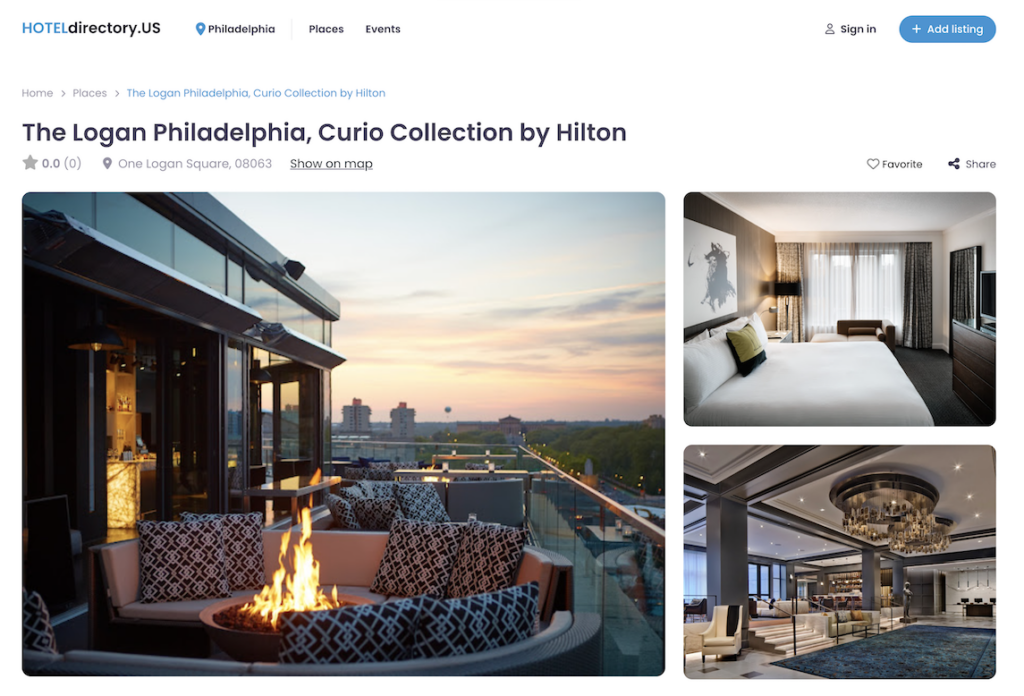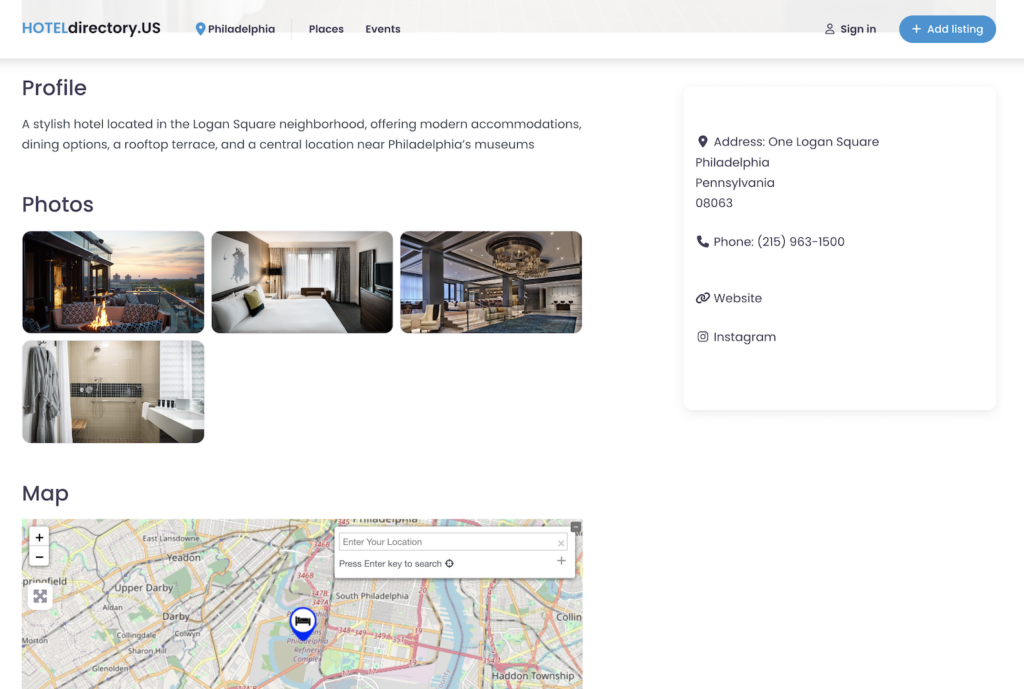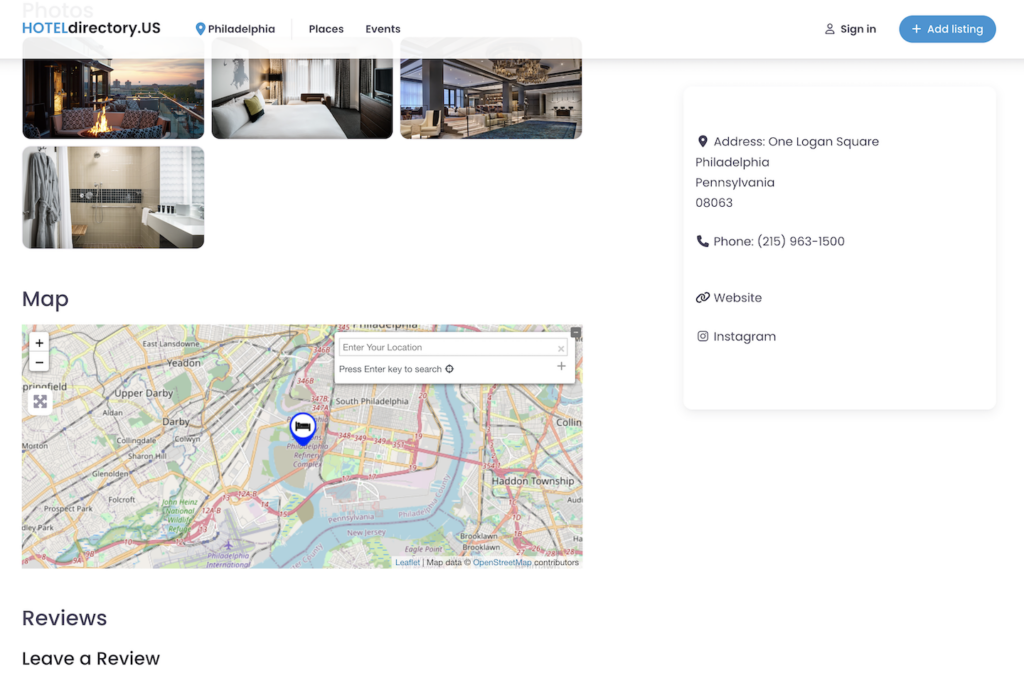Let’s Talk Advertising
There are 2 basic kinds of advertising: Directional and Creative.
Directional Advertising
Directional advertising is the most “direct” type and it is the most common form of advertising found in a “directory.” In fact, that is the reason we use the term “Directory.” Direct is the root word in the term Directory. When you list in a directory, it is called Direct Advertising because you are being found when a customer is directly looking for your product or service. You are simply making yourself easy to be found. The customer finds you because they WERE ALREADY LOOKING FOR YOU or someone like you.
Actually, some don’t call this advertising at all. Even organizations who don’t typically “advertise” will list in a directory; examples include “word of mouth” operations & high brand recognition businesses, as well as professional services, including hospitals, medical offices, & engineers.
The essential strategy in Direct Advertising is to make it easy for your potential customer to find you. And since you are often listed among your competition, the next priority is to stand out among your competition and get the call, click, or visit. Once you get to interact with the potential customer, who in most cases is ready to buy, the rest is up to you or your team.
So direct advertising is straightforward. Someone is going to get the business. If you aren’t listed, it won’t be you. You won’t get to talk to the customer, client, guest, or patient; someone else will.
If you are listed but in a place that is not easily seen, such as on the bottom of the list, there is a high risk that they will make their buying decision before ever seeing you. So listing placement & prominence is essential – you must be seen, and the listing must be attractive.
It isn’t enough to know that people want your product or service and are looking for someone like you. It is important that buyers see your product or service offering in all of its attractive glory – as it is. The impression they get will have an impact on whether you seem professional, reliable, trustworthy, and this can even have an impact on perceived value.
People are often willing to pay more to buy from someone they feel good about.
This is where Featured Listings provide a valuable service.
Featured Listings not only impact visibility, but they also let you present yourself to a potential customer, client, visitor, or patient, in a way that meets their need to get as much ‘confidence building information’ as possible to make a buying decision. The result, the start of a seller-buyer relationship.
In fact, most buyers would prefer to connect with a seller that clearly wants their business, and presents themselves in an honest and clear way which helps make a buying decision easy. This is often accomplished through graphics, descriptive text, photos, videos, maps, branding, links, reviews, & offers.
Directories are organized in categories, and often businesses need to be found in more than one category.
Similarly, businesses share customers. For example, hotel guests are almost always looking for other services such as restaurants, transportation, & tickets.
Also, multi-location businesses may need to be found in multiple cities. With our online directories, scaling is very easy and cost-effective.
Creative Advertising
Creative Advertising can take a lot of forms including television, radio, billboards, magazines, newspapers, and display advertising on the internet, including the infamous online click-bait.
Creative advertising attempts to create buyers or influence their next buying decision, whenever that might be. So creative ad campaigns may be extremely broad, such as a freeway billboard, or a bit more targeted such as a country music radio ad. Some internet advertising can be very-targeted, such as a well placed social media ad. But all forms of creative advertising have one thing in common, they are attempting to influence a future decision, or in a best case scenario, catch them at the right time when they are ready to buy.
One form of creative advertising that accomplishes both objectives is targeted display ads on a directory category search results page. For example, if someone is searching for hotels in a particular city and a display ad pops up in the sidebar or top banner promoting your hotel or targeting a hotel client for a local event or restaurant.
The idea is that a display ad is considered “creative advertising” but placing it on a search results page makes it hyper-targeted so that the benefits are really “directional.” By comparison, placing the same display ad on the home page of the same directory, which is not targeted by category or region, may be an example of traditional “creative advertising.”
In Summary:
The 2 types of advertising are Directional & Creative. Directory listings are the best example of Directional advertising because it is “direct” & directly connects buyers ready to buy with sellers. Creative Advertising isn’t called such because it is more artistically creative, although that can sometimes be true. Creative ad campaigns seek to create customers. Sometimes there is a lot of artistic creativity & production involved in creating new customers, which can be the most expensive part of advertising.
Our directory sites have both Directional (Featured Listings) & Creative (display ads & promotional videos) advertising opportunities. Our network approach drives targeted traffic to our sites & delivers qualified buyers to sellers like you. Our sites are easy to navigate for both buyers & sellers. Connecting buyers & sellers is the core of what our directories are all about.
Myths about directory advertising:
Myth #1. Nobody uses directories anymore – everybody uses Google.
False: This is not true for a number of reasons. Directories are still the best way to find what you are looking for fast & efficiently. Technology makes searches faster, and more portable. But directories are still the best way to find what you are looking for. Whether you are using Expedia, Yelp, Angies List, Craigs List, or Facebook marketplace, the question should not be about whether directories are relevant today, but which directories will drive the traffic you need to make your phone ring, your website light up, or to bring clients through your front door.
Myth #2. I just need to rank well on a Google Search.
False: This is not the best strategy for most businesses & non-profits because it isn’t affordable or sustainable, and many customers are not looking for you on a general google search.
First, the amount of money you pay is variable based upon whatever they think they can get from you. If you make this your primary strategy, watch what happens to your bill. Talk to others who have made Google search as their method for gaining clients. It may seem attractive at first, but you may be shocked at what you will be paying to keep your business going. Many have found that they have effectively handed over control of their business and become an employee of a tech giant.
Second, just try to Google search your business or organization using the general terms that a “word of mouth referral” might use. This includes their best guess at your actual name & spelling. If you don’t show up on the first page, this is assuredly a losing strategy for you.
Third, many of your customers & clients hate to use Google & similar search engines to find a local business, service, or church. Don’t believe us? Ask around. Why? Because it is often a frustrating experience. This is especially true for buyers over 35, where almost all of the disposable income is held. This is what proves the value of directories such as Hotels.com, Trivago, TripAdvisor, HOTELDirectory.US along with so many others.
Online directories remain the most useful types of sites. The question is not Yes or No to directory advertising but “Which ones are right for you?”
Myth #3. I need to advertise in other places, like radio, T.V., & throughout the internet.
False. You need to simply list or advertise where your customers are most likely to find you. Most businesses have a maximum capacity for customer handling. Once that limit is reached, it may be time to raise your prices.
Myth #4. I don’t need to advertise.
False. Experts say that organizations that don’t advertise are almost surely on a decline.
Myth #5. I can’t afford to advertise.
False. Chances are much higher that you can’t afford to NOT advertise. If you are in business, advertising is essential. Every organizational expert will say that advertising, even for mature businesses, is essential. It is often much more expensive to not advertise. This is especially true when we are talking about directory listings. The most expensive choice is to not be where customers are looking for you.
Myth #6. I can’t track if my advertising dollars are effective.
False. While that may be true about some forms of advertising, that isn’t true about listings & advertising with us. You should be able to track your effectiveness and know your Return on Investment (ROI). Advertising can (and should) be cost effective. There are a handful of important steps which are actually pretty straightforward. We are happy to help you with this, and are ready to prove our value.
Myth #7. I don’t think advertising on your sites & networks is the best use of my budget.
False. It is a fact that media that doesn’t deliver is not a valuable place to advertise, but if your potential customers are on our sites, then it is likely a very good place to invest. This is especially true for direct advertising but can also be true for our display advertising opportunities. We make it our focus that people use our sites to aid them in their important spending choices & real life decisions. If we have your buyers, you need to be here.
Experience the benefits of Featured Listings

Display YOUR photos that YOU want people see
Make a beautiful profile that makes it easy for customers to find you


Create listings that bring people directly to you